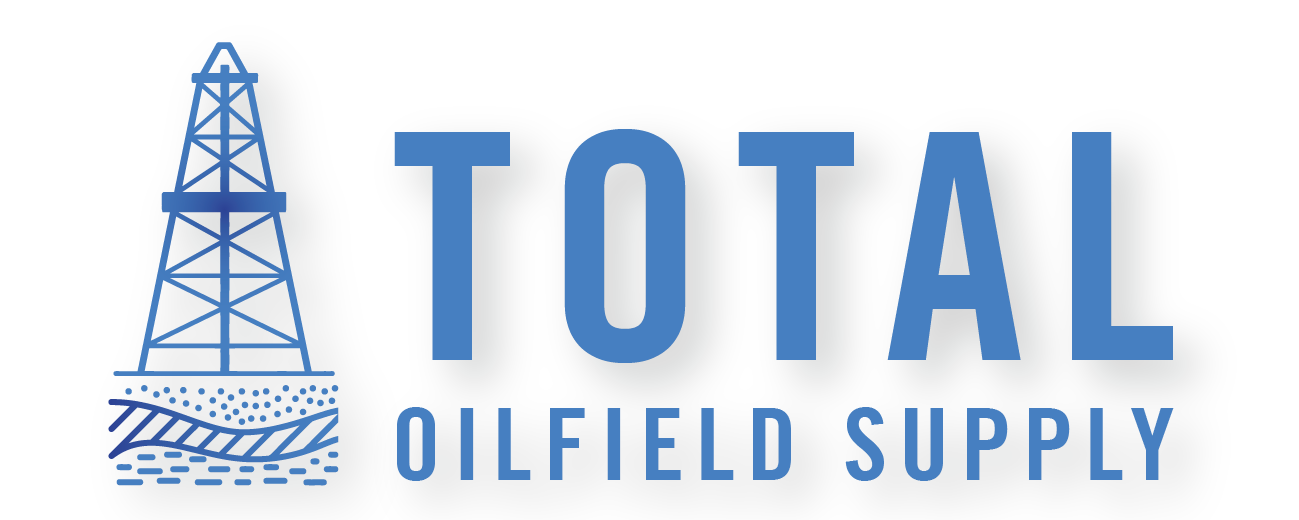A heli rig is an offshore drilling unit outfitted to operate with helicopters, enabling direct transport of crews and gear to remote oilfield sites. In this article, we will discuss what is a heli rig in oilfield operations, exploring the integral role heli rigs play in overcoming the logistical hurdles of oilfield operations, their design considerations for helicopter landings, and how they ensure the safety and efficiency of transportation in the vast open sea.

Key Takeaways
Heli rigs are offshore drilling units equipped with helidecks for helicopter operations, facilitating access to remote oil fields and ensuring the safety and efficiency of transporting personnel and equipment.
Offshore helicopter operations involve rigorous safety measures such as preflight checks, specialized pilot training, and enhanced evacuation systems to manage the risks posed by variable sea conditions and unpredictable weather.
Technological innovations in heli rig operations are driving market growth, with improvements in payload, safety features, and environmental sustainability reflecting the industry’s drive towards clean energy and efficient deepwater exploration.
Defining the Heli Rig: A Primer for Oilfield Operations
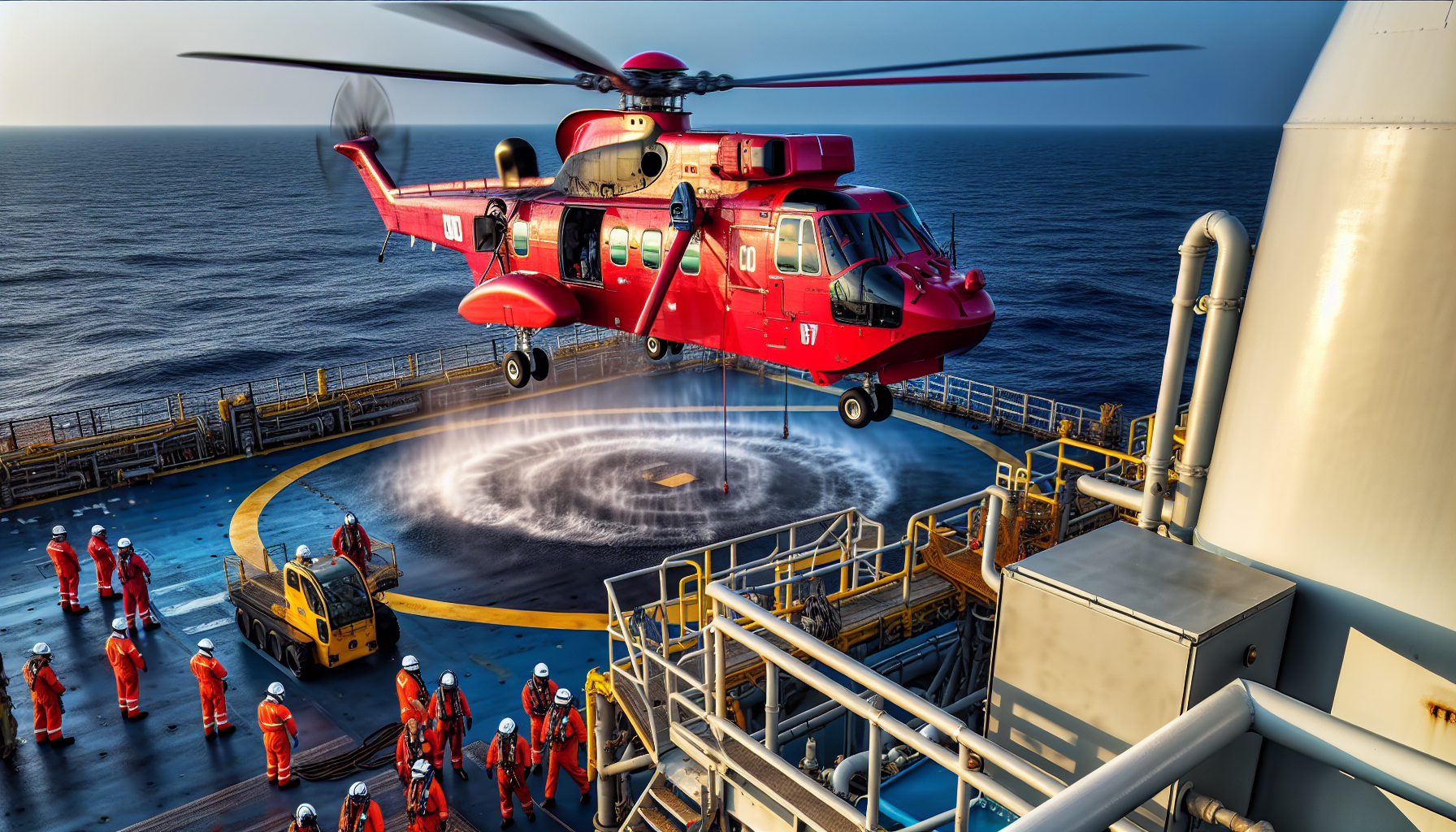
A heli rig is a mobile offshore drilling unit equipped for helicopter operations. These specialized platforms are designed to transport personnel and equipment to offshore locations, such as oil rigs and drilling ships. The heart of a heli rig is the helideck – a purpose-built helicopter landing platform.
Integrating a helideck on heli rigs is key for reaching remote oilfields that conventional marine vessels and their crew find hard to access.
Helicopter Landing Platforms: The Heart of Heli Rigs
The design of helidecks on oil rigs is a complex process, requiring careful consideration of the size and type of helicopters used to ensure the surface area exceeds the rotor diameter, creating an effective ground cushion effect. These platforms are often constructed as separate levels above the quarters building, which helps to isolate vibration and provide a stable and secure landing surface. The structures for helideck systems are engineered to support the maximum take-off weight (MTOW), distributed strategically at the landing gear points. They are also designed to withstand helicopters in various orientations and to support other operational loads such as personnel, freight, and refueling equipment.
Safety is a top priority on these heli rigs. Features include:
Prohibiting gas venting near helidecks
Clear marking of surrounding tall objects
Inclusion of fire-retardant systems with advanced extinguishing capabilities.
Enhanced Safety Measures on Heli Rigs
Offshore helicopter operations prioritize safety. Some of the safety measures include:
Preflight checks on heli rigs encompass inspections of fluid levels, control surfaces, instrumentation, and the helicopter’s overall condition.
Flight planning takes into account factors such as altitude, visibility, wind speed, and direction, as well as the performance characteristics of the helicopter.
Designated, obstruction-free areas are chosen for landing and takeoff.
Established flight paths are followed to reduce the risk of aerial collisions or accidents with the rig structure.
These measures help ensure the safety of offshore helicopter operations.
Furthermore, pilots are required to wear personal protective equipment (PPE) such as helmets, life jackets, and fire-resistant clothing. Additionally, they are equipped with protective air packs and receive training to adapt to fast-changing weather conditions. The helicopters themselves have de-icing systems, and precautions are taken against engine stalling due to extreme temperatures. To reduce the risk of helicopter engine failure from hydrogen sulfide or methane, there’s a recommendation for standardized placement of gas vents away from helidecks.
Lastly, enhanced evacuation systems on heli rigs include smart signage and automated guidance systems to assist helicopter operations during emergencies.
The Role of Heli Rigs in Offshore Drilling
Since the 1940s, helicopters have been an integral part of the offshore energy industry, primarily for transporting exploration crews in regions like the Gulf of Mexico. Heli rigs, with their reinforced landing platforms, provide a stable base crucial for the frequent operation of helicopters in variable open sea conditions. These platforms are critical for maintaining the continuity and effectiveness of offshore drilling operations amid the challenges posed by the open ocean environment.
Besides supporting drilling operations, heli rigs also improve the efficiency and safety of transporting workers and equipment to remote offshore drilling locations and back.
The Importance of Heli Rigs in the Offshore Industry
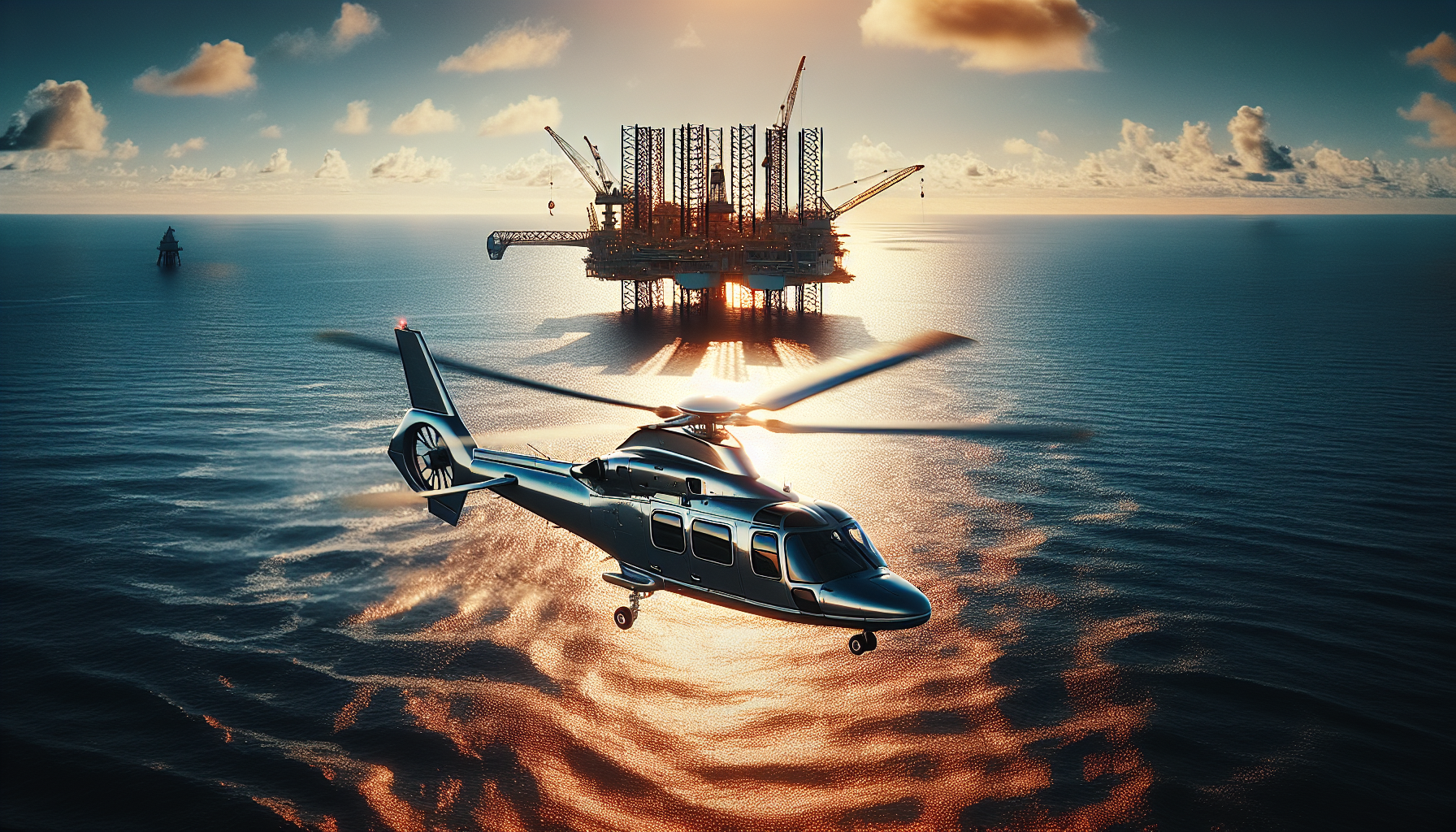
Helicopters play a vital role in the offshore industry, providing essential services such as the installation, maintenance, and decommissioning of energy facilities. Their speed, agility, and cost-efficiency make them a superior choice over boats. The demand for offshore helicopter services varies, affected closely by economic conditions. A rise in economic growth and oil prices increases the need for these services.
Recent global events, such as the Russia/Ukraine conflict, have prompted countries to secure their energy supplies. This has had a positive impact on the equilibrium between supply and demand in the offshore helicopter fleet market.
Extending Reach: Accessing Remote Oil Deposits
Helicopters are the gateways to offshore drilling locations, significantly expanding the oil industry’s reach into remote areas previously considered inaccessible. Their critical role in discovering and developing offshore oil reserves has become increasingly prominent due to the industry’s push towards deepwater exploration. The growing global demand for crude oil, especially from deepwater locations, necessitates the use of helicopters to connect far-off energy infrastructure with the mainland.
Interestingly, a surge in oil and gas prices has led to increased offshore exploration and production, resulting in:
Unexpected shortages of helicopters for these operations
Unmet flight requests
Escalating contract rates
Affecting the efficiency and cost of offshore operations.
Streamlining Operations: The Efficiency of Air Transport
Helicopters are indispensable for quickly transporting crews to offshore installations, significantly increasing the efficiency of oilfield operations. The benefits of using helicopters include:
Quick transportation of crews to offshore installations
Increased efficiency of oilfield operations
Flexible scheduling and utilization of helicopter fleets
Capacity to adapt to varying offshore activity levels and market demands
Moreover, the demand for and scheduling of offshore helicopter transportation are directly impacted by global oil price changes, adjusting to the industry’s need for cost-effective transport solutions.
Emergency Response: Heli Rigs and Medical Evacuation
Heli rigs are pivotal during medical emergencies or evacuation scenarios. Helicopters like the Sikorsky S-92 are an essential part of offshore rig safety systems, providing swift medical evacuation with higher takeoff weights to accommodate extra emergency personnel and equipment. The helidecks on offshore oil rigs ensure that in emergencies, personnel can be quickly airlifted to medical facilities for treatment.
The DZMx system supports emergency medical services by enabling real-time transmission of critical data from on-board medical equipment, such as ECG monitors, to facilitate immediate medical responses during evacuations. Further, technologies such as emergency breathing systems and helicopter emergency flotation systems are crucial for the survival of occupants during a helicopter ditch. The implementation of systems like DZMx is essential for precise helicopter location tracking during search and rescue operations and emergency situations.
Navigating the Challenges: Heli Rigs and Offshore Risks
Offshore helicopter operations are fraught with risks and challenges. Some of the main challenges include:
Adverse weather conditions, with wind speeds reaching 55 to 70 miles per hour, present significant challenges to helicopter control.
The presence of large rotor blades from offshore wind turbines obstructs air traffic and complicates the operating environment.
A high likelihood of ditching during offshore helicopter operations contributes to elevated risk levels, with many system malfunctions potentially requiring water landings.
Most fatalities in offshore helicopter accidents result from drowning, as escaping from a submerged aircraft can be difficult, and safety systems may fail upon water impact.
Nonetheless, despite these challenges, the offshore helicopter industry remains essential for deepwater exploration and development in the offshore oil and gas sector, serving as a crucial transportation link for offshore workers.
Weather Woes: Operating Amidst Unpredictable Conditions
Adverse weather conditions considerably affect offshore helicopter operations. These conditions, such as strong winds, thunderstorms, and lightning, often necessitate flight cancellations or redirects to ensure safety. To withstand adverse weather events, heli rigs are outfitted with helicopter tie-down points designed for extreme conditions and decks engineered to manage wind loading and installation motion.
Pilots utilize various tools, including webcams and direct communication with manned platforms, to monitor weather changes and make crucial operational decisions. Furthermore, flight planning and scheduling must strategically account for weather-imposed risks, with contingency measures ready for timely evacuation in case of storms or hurricanes.
Logistical Hurdles: Coordinating Flights and Operations
The offshore helicopter support business encounters distinct logistical issues. Overcapacity and low aircraft utilization pose challenges in efficiently coordinating flights. Offshore helicopter operators struggle to maintain a steady inflow of orders due to an oversupply in the market, low lease rates, and the prevalence of short-term contracts with oil companies.
This problem is further exacerbated by pressure from oil companies to cut costs, adding to the logistical complexities of managing a continuous flow of helicopter traffic to and from the heli rigs.
Maintaining Stability: The Engineering Behind Heli Rigs
Helicopter stability during landings on heli rigs is compromised by the sea’s motion, resulting in pitch, roll, and heave movements of the platform. Dynamic positioning systems maintain heli rig stability against sea movements by actively counteracting the effects of pitch, roll, and heave.
The helideck structures are engineered to manage the extra stress and vibration from helicopter operations, preserving the heli rig’s integrity during landings and takeoffs. Additionally, to combat the corrosive marine environment, engineers select specific materials and coatings for heli rig construction that are resistant to degradation.
Heli Rig Innovations: Technology and Future Prospects

The market for offshore helicopter services is poised for significant growth from 2020 to 2025, stimulated by the increasing necessity for deepwater exploration and development. Certain helicopter models, such as the AW139 and S-92, are witnessing an uptick in market values, influenced by transaction data, market sentiment, and specific demand for each helicopter type.
Dominant models in the offshore helicopter fleet include the Leonardo AW139, Sikorsky S-92, and Sikorsky S-76, which collectively form a significant share of helicopters deployed in offshore operations.
Cutting-Edge Equipment: Modernizing Heli Rig Operations
Investments in new technology helicopters with improved payload and safety features in the early 2000s significantly expanded deepwater exploration capabilities. New helicopter models like the Airbus H175 and Leonardo AW189 allow for more cost-efficient operations, replacing larger, less efficient aircraft in offshore settings.
Advanced helideck lighting systems have been engineered to provide pilots with optimal visibility during landings and takeoffs, while minimizing impairing glare. Investing in reliable weather forecasting and enhancing communication systems are essential to reducing the risks associated with helicopter flights in offshore environments.
Communication and Control: Enhancing Offshore Coordination
Effective communication with ground personnel is crucial for ensuring that any changes or potential hazards on the rig are promptly communicated to helicopter crews. Advanced communication equipment such as two-way radios and satellite links is vital for effectively coordinating helicopter-based emergency responses. Remote monitoring and control centers situated onshore play a pivotal role in managing offshore helicopter operations and emergency responses.
The Flightcell DZMx system facilitates robust communication between helicopter crews and ground personnel even when operating in areas beyond the reach of cell-phone networks. Furthermore, the DZMx system ensures uninterrupted tracking and communication by seamlessly switching between cellular data and satellite transmission. Oil companies are responsible for maintaining communication systems like monitors and machinery, offering adequate training, and investing in reliable weather forecasting technology for heli rig operations.
Sustainability and Green Technologies
Offshore oil rigs, including the offshore oil rig, are integrating renewable energy sources like wind turbines and solar panels to decrease reliance on fossil fuels and foster clean power generation. Oil rig operators are adopting comprehensive waste management systems aimed at minimizing the release of methane and other harmful emissions. Advanced water treatment technologies, including reverse osmosis and biological filtration, are being used on heli rigs to treat wastewater efficiently and diminish environmental impacts. Through the adoption of green technologies, efficiency in power generation has been significantly enhanced, reducing the environmental footprint of the drilling operations.
Furthermore, biodiversity conservation initiatives are in place, utilizing real-time marine life tracking and the establishment of protected zones around offshore rigs to preserve the ecological balance.
Total Oilfield Supply Has experience Sourcing, Refurbishing and Shipping Heli Rigs.
With over 30 years in the oilfield industry, Total Oilfield Supply’s experts can guide you through the process of purchasing a new Heli rig. They can consolidate everything under a single point of contact, from sourcing components to shipping them all the way to your final destination.
Their experts, who are experienced oil rig workers, have consulted on oil rigs in some of the most remote areas of the world, providing invaluable insights and support throughout the process.
Here is a Heli Rig which Total Oilfield Supply experts helped source and move for one of our clients:
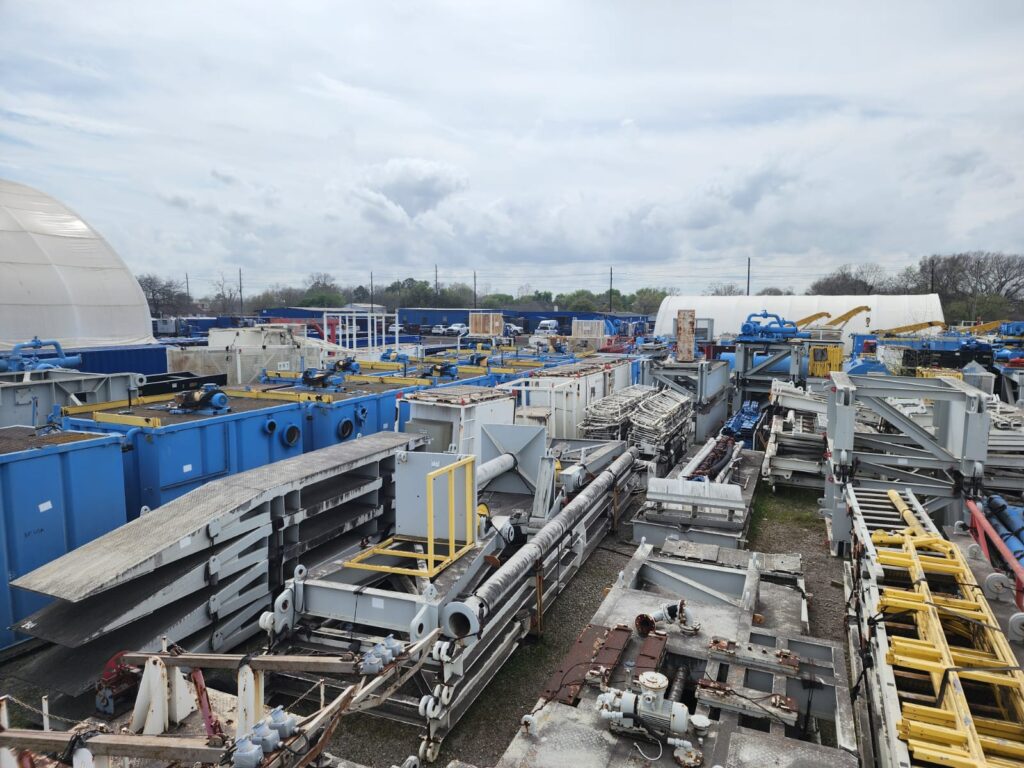
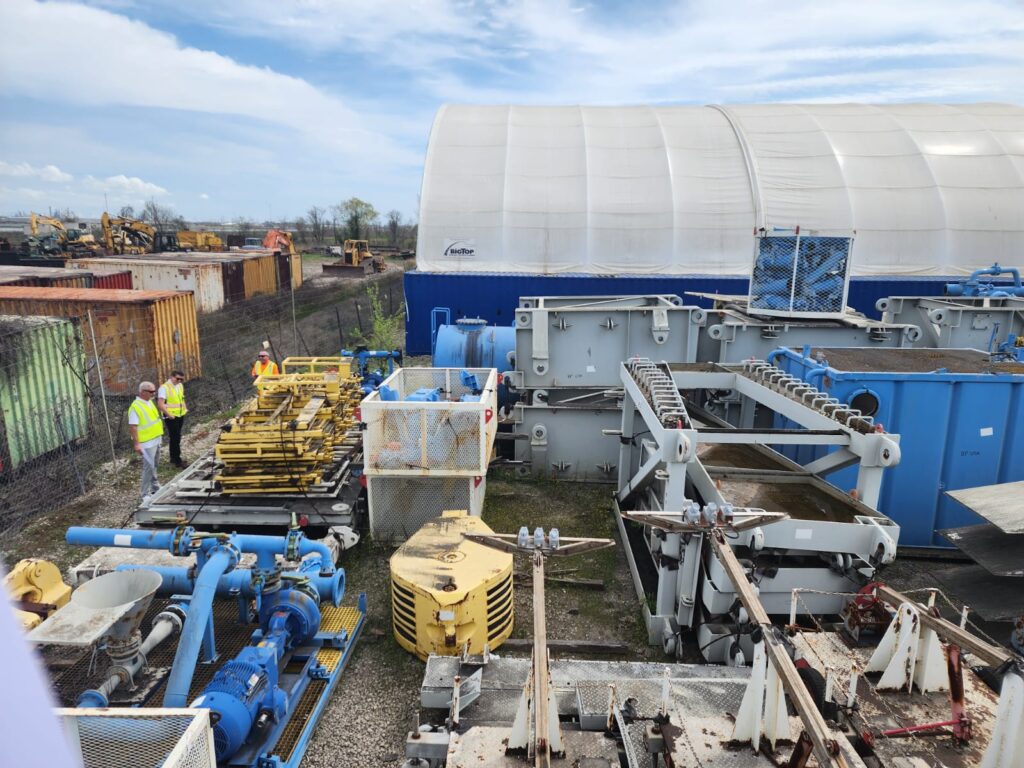
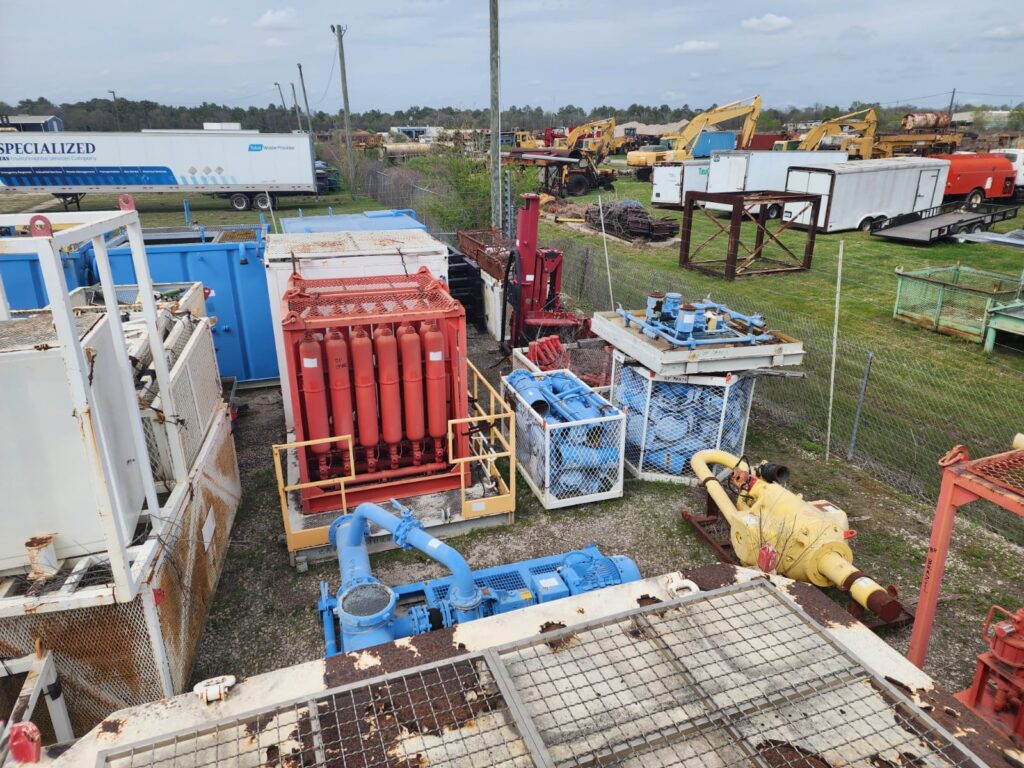
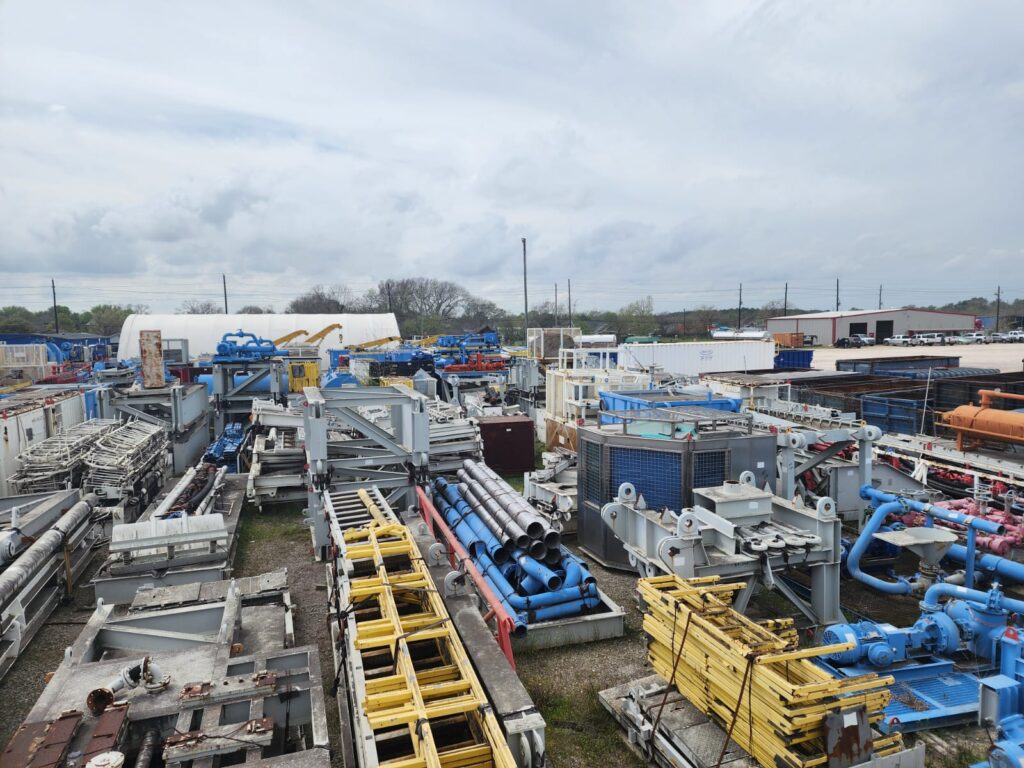
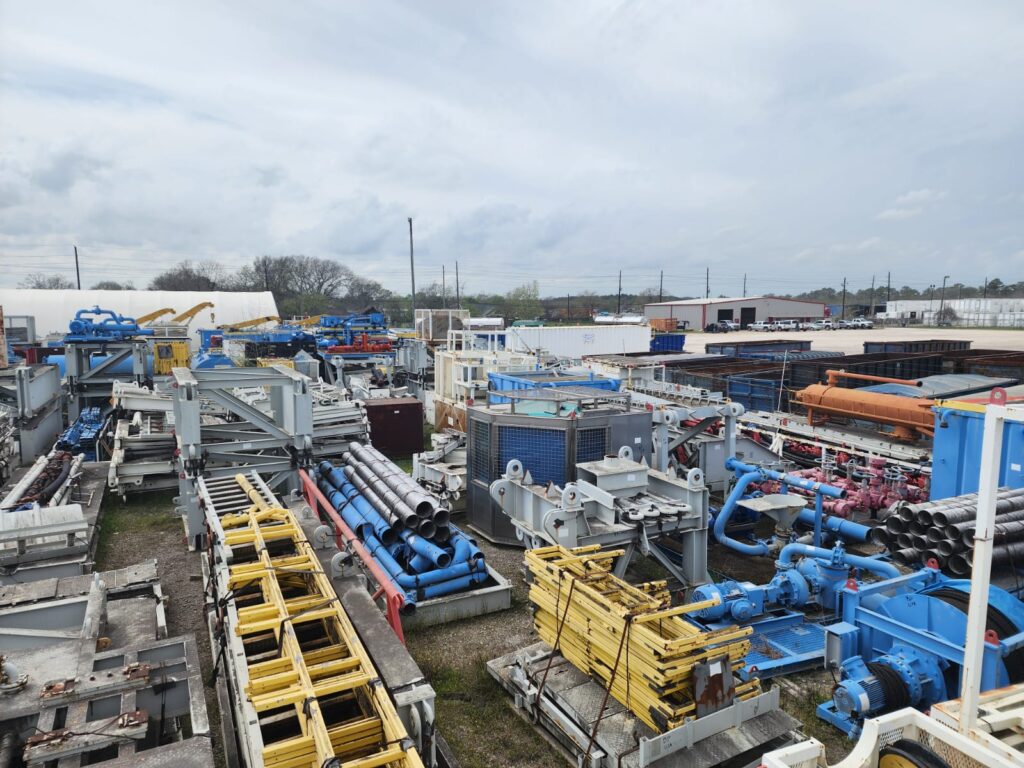
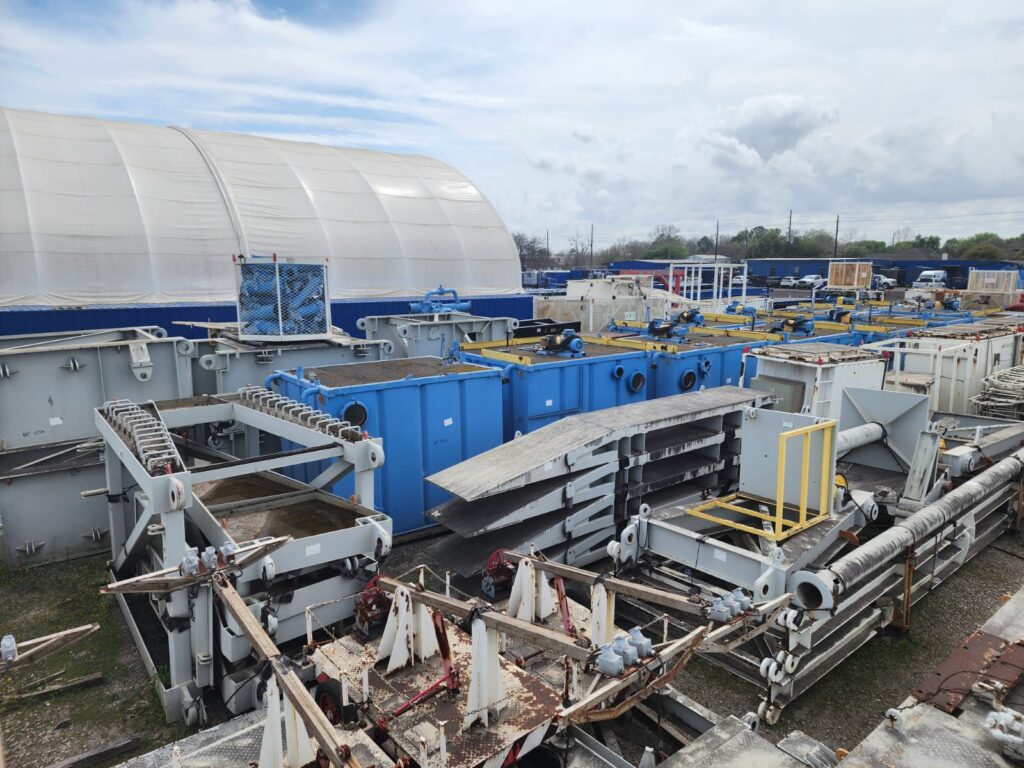
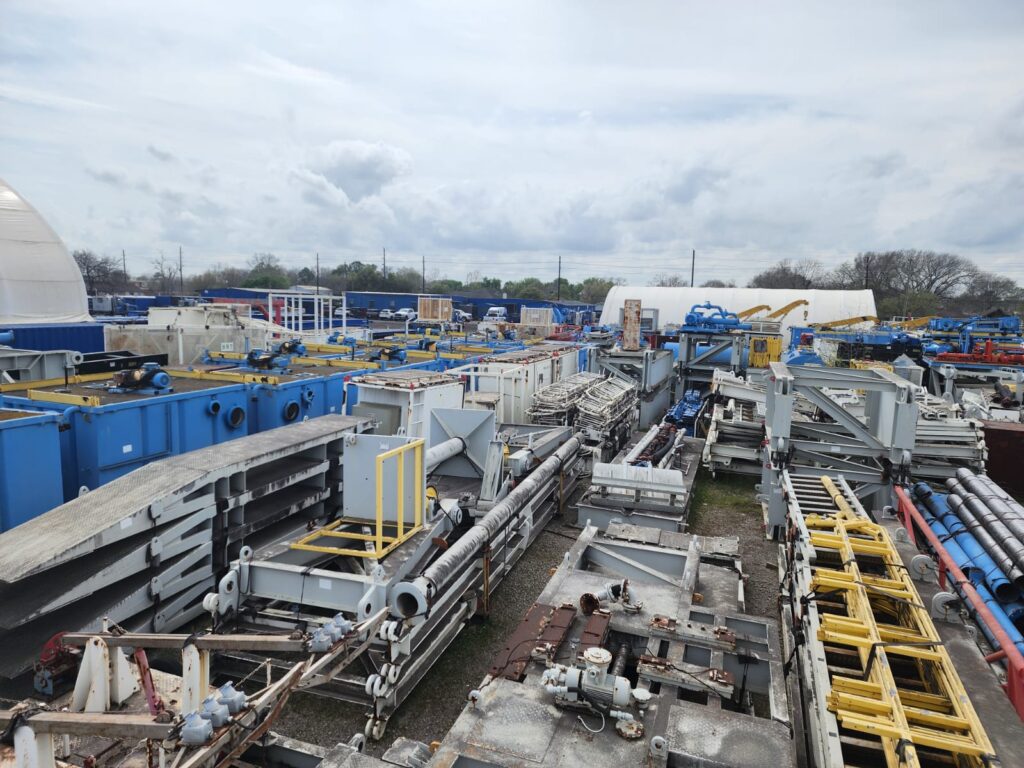
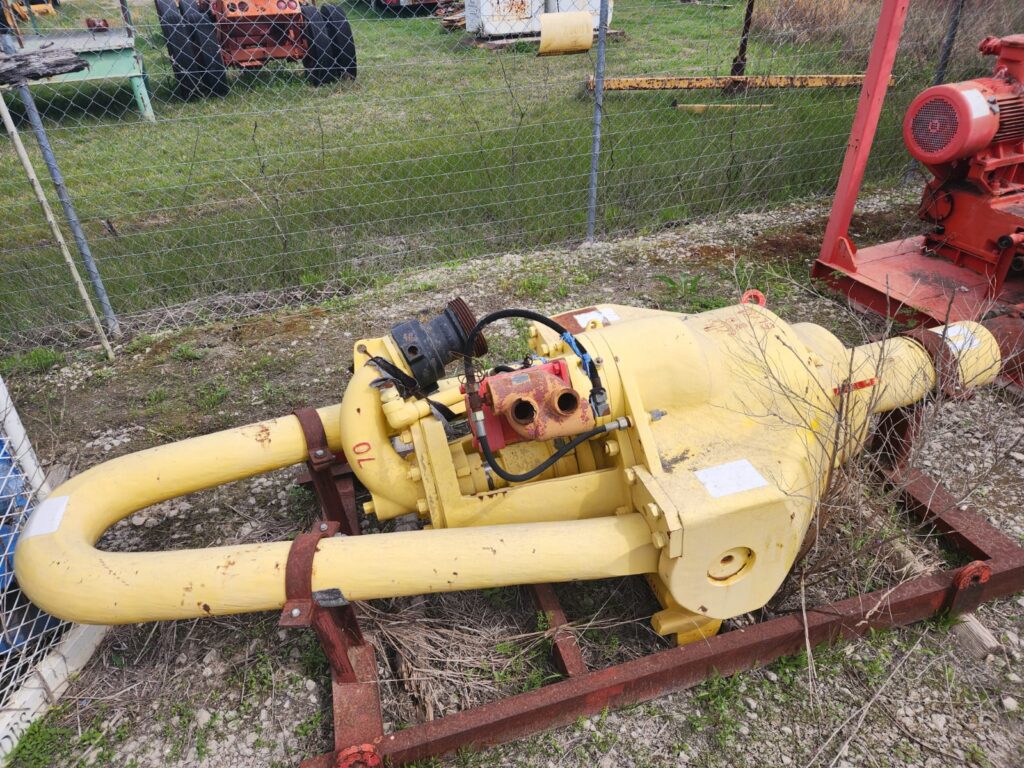
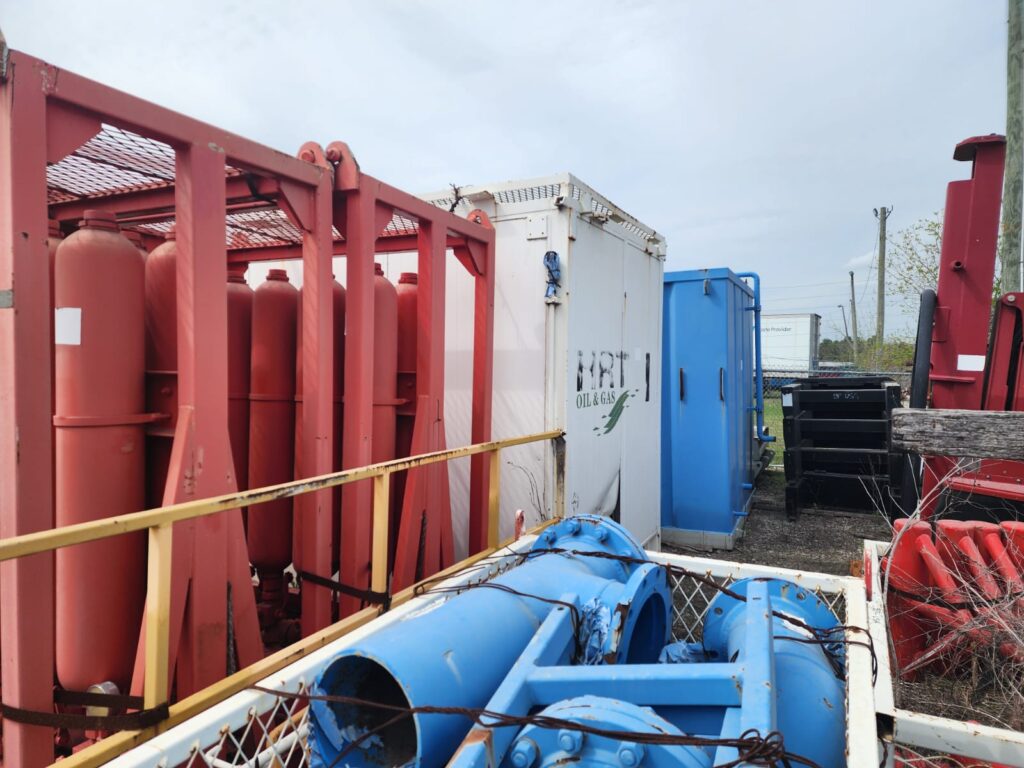
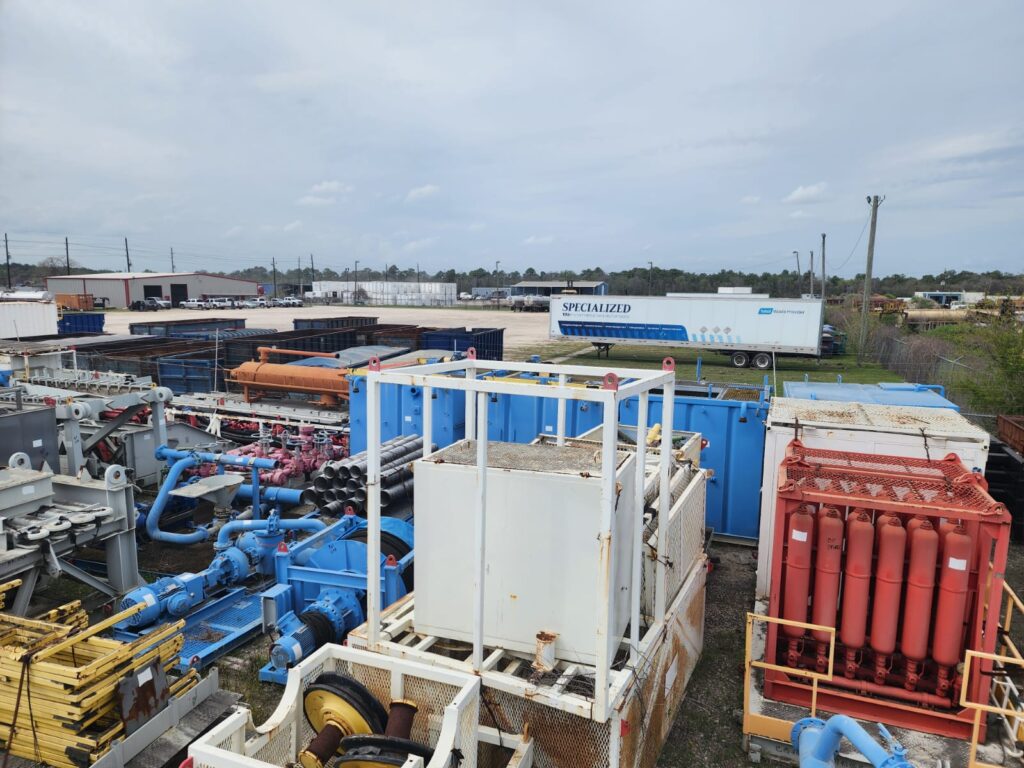
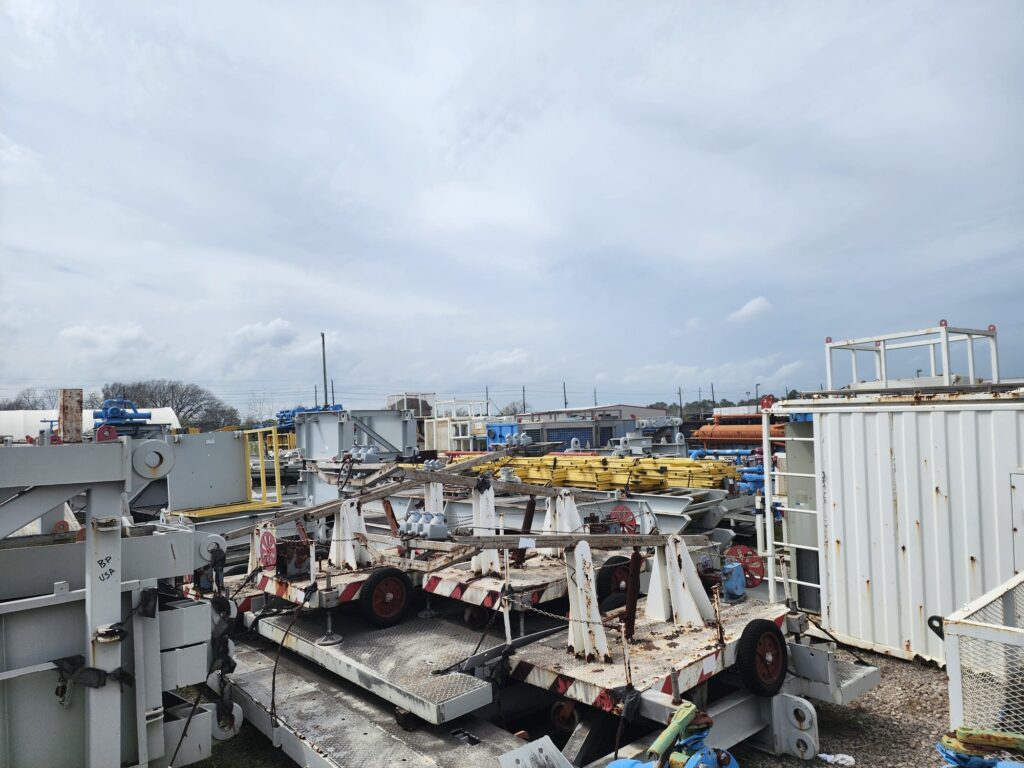
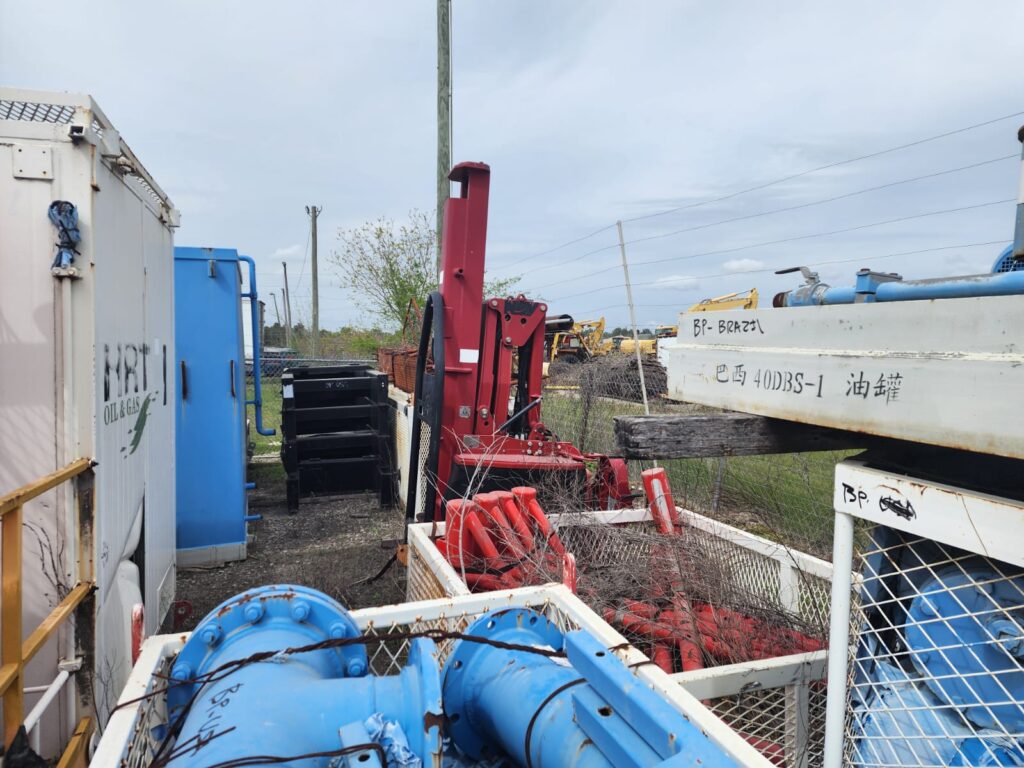
Defining the Heli Rig: A Primer for Oilfield Operations
To briefly recap, a heli rig is an offshore drilling unit equipped for helicopter operations, transporting personnel and equipment to offshore locations. The critical component of a heli rig is the helideck, a purpose-built landing platform for helicopters.
This integration of a helideck on heli rigs is crucial for accessing remote oilfields that are otherwise difficult to reach by conventional marine vessels.
Helicopter Landing Platforms: The Heart of Heli Rigs
The design of helidecks on oil rigs must account for the expected size and type of helicopters used. These platforms are often constructed as separate levels above the quarters building, isolating vibration and providing a stable and secure landing surface. Safety features such as the prohibition of gas venting near helidecks, clearly marked surrounding tall objects, and the incorporation of fire-retardant systems are also significant aspects of these helidecks.
Enhanced Safety Measures on Heli Rigs
Safety measures such as:
Preflight checks
Flight planning
Use of personal protective equipment
Establishment of designated, obstruction-free areas for landing and takeoff
Established flight paths
Use of protective air packs
Training to adapt to fast-changing weather conditions
are essential components of helicopter operations on heli rigs.
Enhanced evacuation systems on heli rigs include smart signage and automated guidance systems to assist helicopter operations during emergencies.
The Role of Heli Rigs in Offshore Drilling
Helicopters have been an essential part of the offshore energy industry since the 1940s, primarily for transporting exploration crews. Heli rigs, with their reinforced landing platforms, provide a stable base crucial for the frequent operation of helicopters in variable open sea conditions. These platforms play a critical role in maintaining the continuity and effectiveness of offshore drilling operations amid the challenges posed by the open ocean environment.
The Importance of Heli Rigs in the Offshore Industry
Helicopters provide essential services for the offshore industry, from the installation, maintenance, and decommissioning of energy facilities to transporting crews to offshore installations. The demand for offshore helicopter services varies, affected closely by economic conditions. A rise in economic growth and oil prices increases the need for these services.
Recent global events, such as the Russia/Ukraine conflict, have prompted countries to secure their energy supplies, positively impacting the equilibrium between supply and demand in the offshore helicopter fleet market.
Extending Reach: Accessing Remote Oil Deposits
Helicopters facilitate access to offshore drilling locations, broadening the oil industry’s reach into previously inaccessible remote areas. Their vital role in discovering and developing offshore oil reserves has gained prominence due to the industry’s drive towards deepwater exploration.
The growing global demand for crude oil, especially from deepwater locations in the Asia Pacific region, necessitates the use of helicopters to connect far-off energy infrastructure with the mainland.
Streamlining Operations: The Efficiency of Air Transport
Helicopters are indispensable for quickly transporting crews to offshore installations, significantly increasing the efficiency of oilfield operations. The benefits of using helicopters include:
Quick transportation of crews to offshore installations
Increased efficiency of oilfield operations
Flexible scheduling and utilization of helicopter fleets
Capacity to adapt to varying offshore activity levels and market demands
Moreover, the demand for and scheduling of offshore helicopter transportation are directly impacted by global oil price changes, adjusting to the industry’s need for cost-effective transport solutions.
Emergency Response: Heli Rigs and Medical Evacuation
Heli rigs are pivotal during medical emergencies or evacuation scenarios. Helicopters like the Sikorsky S-92 are an essential part of offshore rig safety systems, providing swift medical evacuation with higher takeoff weights to accommodate extra emergency personnel and equipment. The helidecks on offshore oil rigs ensure that in emergencies, personnel can be quickly airlifted to medical facilities for treatment.
The DZMx system supports emergency medical services by enabling real-time transmission of critical data from on-board medical equipment, such as ECG monitors, to facilitate immediate medical responses during evacuations.
Navigating the Challenges: Heli Rigs and Offshore Risks
Offshore helicopter operations are fraught with risks and challenges. Adverse weather conditions, with wind speeds reaching 55 to 70 miles per hour, present significant challenges to helicopter control. The presence of large rotor blades from offshore wind turbines obstructs air traffic and complicates the operating environment.
A high likelihood of ditching during offshore helicopter operations contributes to elevated risk levels, with many system malfunctions potentially requiring water landings. Most fatalities in offshore helicopter accidents result from drowning, as escaping from a submerged aircraft can be difficult, and safety systems may fail upon water impact.
Weather Woes: Operating Amidst Unpredictable Conditions
Adverse weather conditions considerably affect offshore helicopter operations. These conditions, such as strong winds, thunderstorms, and lightning, often necessitate flight cancellations or redirects to ensure safety. To withstand adverse weather events, heli rigs are outfitted with helicopter tie-down points designed for extreme conditions and decks engineered to manage wind loading and installation motion.
Pilots utilize various tools, including webcams and direct communication with manned platforms, to monitor weather changes and make crucial operational decisions. Furthermore, flight planning and scheduling must strategically account for weather-imposed risks, with contingency measures ready for timely evacuation in case of storms or hurricanes.
Logistical Hurdles: Coordinating Flights and Operations
The offshore helicopter support business encounters distinct logistical issues. Overcapacity and low aircraft utilization pose challenges in efficiently coordinating flights. Offshore helicopter operators struggle to maintain a steady inflow of orders due to an oversupply in the market, low lease rates, and the prevalence of short-term contracts with oil companies.
This problem is further exacerbated by pressure from oil companies to cut costs, adding to the logistical complexities of managing a continuous flow of helicopter traffic to and from the heli rigs.
Maintaining Stability: The Engineering Behind Heli Rigs
Helicopter stability during landings on heli rigs is compromised by the sea’s motion, resulting in pitch, roll, and heave movements of the platform. Dynamic positioning systems maintain heli rig stability against sea movements by actively counteracting the effects of pitch, roll, and heave.
The helideck structures are engineered to manage the extra stress and vibration from helicopter operations, preserving the heli rig’s integrity during landings and takeoffs. Additionally, to combat the corrosive marine environment, engineers select specific materials and coatings for heli rig construction that are resistant to degradation.
Heli Rig Innovations: Technology and Future Prospects
The market for offshore helicopter services is poised for significant growth from 2020 to 2025, stimulated by the increasing necessity for deepwater exploration and development. Certain helicopter models, such as the AW139 and S-92, are witnessing an uptick in market values, influenced by transaction data, market sentiment, and specific demand for each helicopter type.
Dominant models in the offshore helicopter fleet include the Leonardo AW139, Sikorsky S-92, and Sikorsky S-76, which collectively form a significant share of helicopters deployed in offshore operations.
Cutting-Edge Equipment: Modernizing Heli Rig Operations
Investments in new technology helicopters with improved payload and safety features in the early 2000s significantly expanded deepwater exploration capabilities. New helicopter models like the Airbus H175 and Leonardo AW189 allow for more cost-efficient operations, replacing larger, less efficient aircraft in offshore settings.
Advanced helideck lighting systems have been engineered to provide pilots with optimal visibility during landings and takeoffs, while minimizing impairing glare. Investing in reliable weather forecasting and enhancing communication systems are essential to reducing the risks associated with helicopter flights in offshore environments.
Communication and Control: Enhancing Offshore Coordination
Effective communication with ground personnel is crucial for ensuring that any changes or potential hazards on the rig are promptly communicated to helicopter crews. Advanced communication equipment such as two-way radios and satellite links is vital for effectively coordinating helicopter-based emergency responses. Remote monitoring and control centers situated onshore play a pivotal role in managing offshore helicopter operations and emergency responses.
The Flightcell DZMx system facilitates robust communication between helicopter crews and ground personnel even when operating in areas beyond the reach of cell-phone networks. Furthermore, the DZMx system ensures uninterrupted tracking and communication by seamlessly switching between cellular data and satellite transmission.
Sustainability and Green Technologies
Offshore oil rigs are integrating renewable energy sources like wind turbines and solar panels to decrease reliance on fossil fuels and foster clean power generation. Oil rig operators are adopting comprehensive waste management systems aimed at minimizing the release of methane and other harmful emissions. Advanced water treatment technologies, including reverse osmosis and biological filtration, are being used on heli rigs to treat wastewater efficiently and diminish environmental impacts. Through the adoption of green technologies, efficiency in power generation has been significantly enhanced, reducing the environmental footprint of the drilling operations.
Furthermore, biodiversity conservation initiatives are in place, utilizing real-time marine life tracking and the establishment of protected zones around offshore rigs to preserve the ecological balance.
Summary
In summary, helicopters and heli rigs play a vital role in offshore oil and gas operations. Despite the inherent risks and challenges, they have proven to be indispensable elements of the offshore industry, extending the industry’s reach into remote oilfields. The future of offshore helicopter operations looks promising, with significant growth expected in the coming years, stimulated by the increasing necessity for deepwater exploration and development. The adoption of advanced technology, improved safety measures, and green practices further enhance the capabilities and efficiency of these operations. As we continue to explore the depths of our oceans for energy resources, heli rigs will undoubtedly remain at the forefront of this endeavor, navigating the skies and the seas.
Frequently Asked Questions
How many types of rigs are there?
There are various types of offshore rigs, including barges, submersibles, platforms, jackups, and floaters (such as semisubmersibles and drill ships).
What is an oil drilling rig called?
An oil drilling rig is called an oil platform, also known as an oil rig or offshore platform.
What is the boss of an oil rig called?
The boss of an oil rig is called a toolpusher, and they are responsible for managing personnel, parts, and performance at the rig, as well as overseeing the driller who is responsible for the active drilling phase and safety of the floor hands.
Why do oil rigs have helipads?
Oil rigs have helipads primarily for transporting personnel to and from offshore platforms, drilling rigs, and other sea vessels, which is crucial in the oil and gas industry due to the remote offshore facilities workers must travel to.
What is a heli rig?
A heli rig is a mobile drilling unit that facilitates helicopter operations and transports personnel and equipment to offshore locations.
